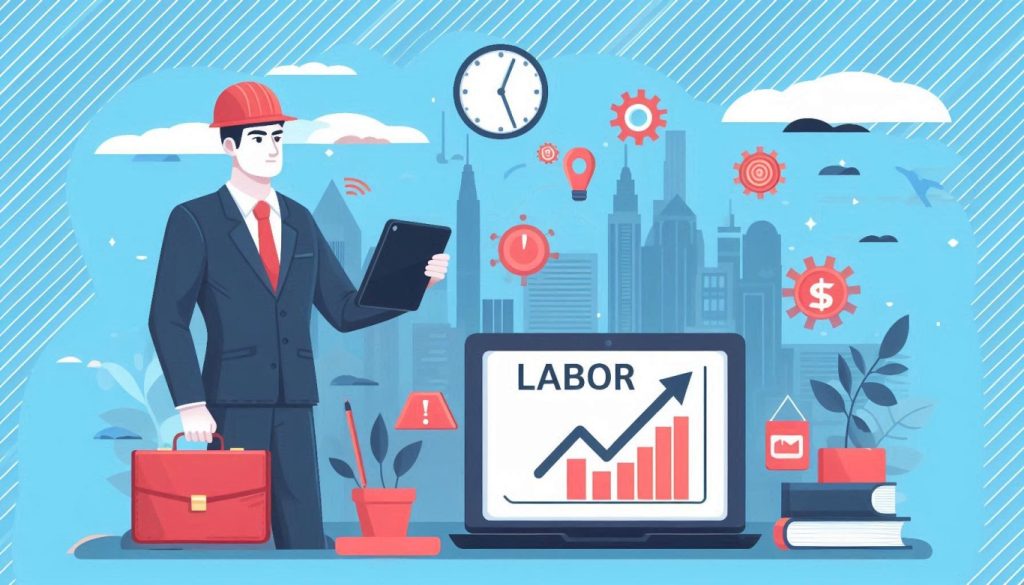The International Labor Organization (ILO) has identified significant challenges facing the labor market and social equity in the Asia-Pacific region. Despite the gradual recovery of global economic growth, it remains slow, and the Vietnam labor market reflects this sluggish pace.
Long-term employment growth has maintained an average rate, with the unemployment rate remaining almost unchanged. These factors pose ongoing difficulties in achieving social equity and regional labor market stability.
Positive Developments
Labor Force Growth: In the second quarter of 2024, Vietnam’s labor force aged 15 and over, reached 52.5 million people. This marks an increase of 148.6 thousand people compared to the previous quarter and 217.3 thousand people compared to the same period last year. Over the first six months of 2024, the labor force grew by 196.6 thousand people year-on-year.
Labor Force Participation Rate: The labor force participation rate in Q2 2024 was 68.6%, showing a slight increase of 0.1 percentage points from the previous quarter.
Employment Growth: The number of employed workers in Q2 2024 stood at more than 51.4 million, reflecting a quarterly increase of 126.6 thousand people (0.25%) and an annual increase of 217.4 thousand people (0.42%). Vietnam remains in its golden population structure period, characterized by an abundant and annually increasing working-age population.
Educational Attainment: The proportion of Vietnamese workers with degrees and certificates in Q2 2024 was 28.1%, up by 0.3 percentage points from the previous quarter and 1.3 percentage points from the same period last year. The nation’s focus on improving education quality and expanding educational infrastructure has enabled more workers to enhance their qualifications continuously.
Average Monthly Income: The average monthly income of workers in Q2 2024 was 7.5 million VND, an increase of 490 thousand VND over the same period last year. The income growth rate of 7% in Q2 2024 outpaced the 5.4% growth rate of Q2 2023. Various sectors saw significant income growth, including water supply, waste management, and treatment activities (up 17.4%), and financial, banking, and insurance activities (up 10.6%).
Persistent Challenges
Quality of Labor Force: Despite improvements, over 70% of workers have not received primary training or higher, highlighting the need to enhance human resource quality and expand training opportunities to meet modern economic demands.
Informal Employment: Informal labor remains prevalent, accounting for over three-fifths of total employed workers. In Q2 2024, the number of informally employed workers was 33.5 million, representing 65.2% of the total employed workforce. This reflects an increase of 271.7 thousand people from the previous quarter and 210.3 thousand people year-on-year.
Business Withdrawals and Unemployment: The difficult business environment, with an average of 18.4 thousand businesses withdrawing from the market in the first half of 2024, contributed to a rise in the unemployment rate. In Q2 2024, the number of unemployed working-age individuals was about 1.08 million, marking an increase of 24.2 thousand people from the previous quarter and 4.2 thousand year-on-year. The unemployment rate for this group was 2.29%.
Youth Unemployment: The unemployment rate among young people aged 15-24 remained high at 8.01% in Q2 2024, increasing by 0.02 percentage points from the previous quarter and 0.6 percentage points from the same period last year. Urban youth faced a higher unemployment rate (10.19%) compared to their rural counterparts (6.86%).
Underemployment: The underemployment rate among working-age people rose slightly to 2.06% in Q2 2024, with urban areas showing a lower rate (1.53%) than rural areas (2.41%). The first half of 2024 saw an increase in underemployment, with 940.5 thousand underemployed individuals, up by 27.3 thousand year-on-year.
While Vietnam’s labor market has shown positive trends in labor force growth, employment rates, educational fulfillment, and average income, significant challenges remain. The quality of labor supply, the prevalence of informal employment, business difficulties, and the high unemployment rate, particularly among youth, highlight areas needing focused intervention. Addressing these issues is crucial for fostering a resilient and equitable labor market capable of supporting sustained economic growth and social development.
ASL Law is a leading full-service and independent Vietnamese law firm made up of experienced and talented lawyers. ASL Law is ranked as the top tier Law Firm in Vietnam by Legal500, Asia Law, WTR, and Asia Business Law Journal. Based in both Hanoi and Ho Chi Minh City in Vietnam, the firm’s main purpose is to provide the most practical, efficient, and lawful advice to its domestic and international clients. If we can be of assistance, please email to [email protected].
ASL LAW is a top-tier Vietnamese law firm that provides in-depth legal advice in Vietnam and internationally. If you need any advice, don’t hesitate to get in touch with us for further information or collaboration.

 Tiếng Việt
Tiếng Việt 中文 (中国)
中文 (中国) 日本語
日本語

